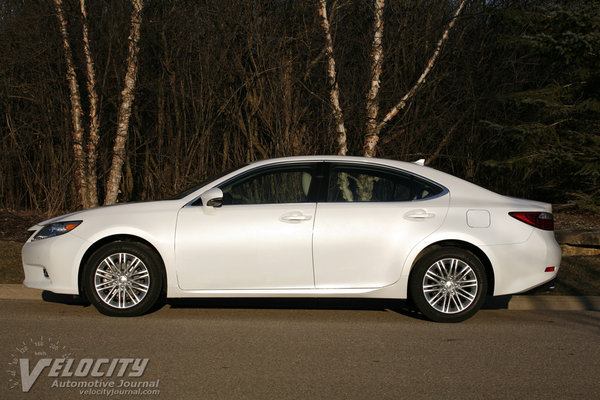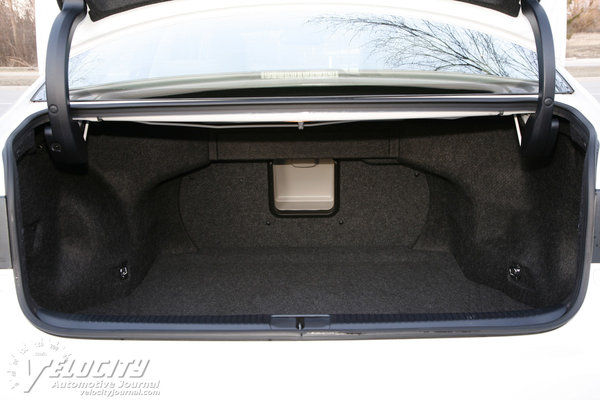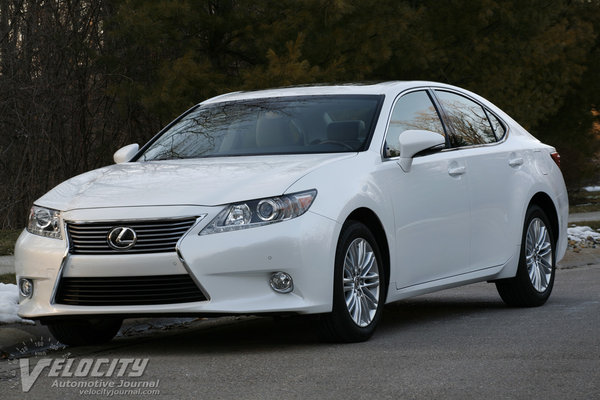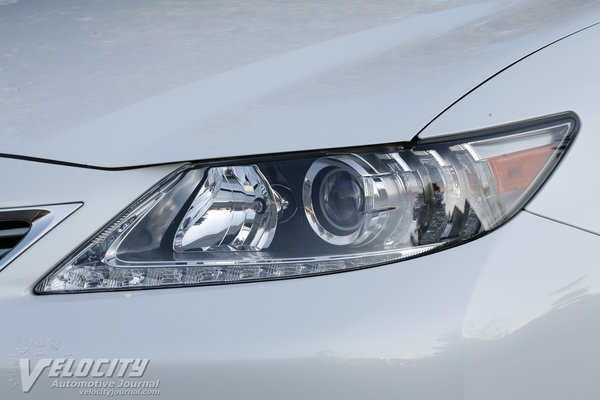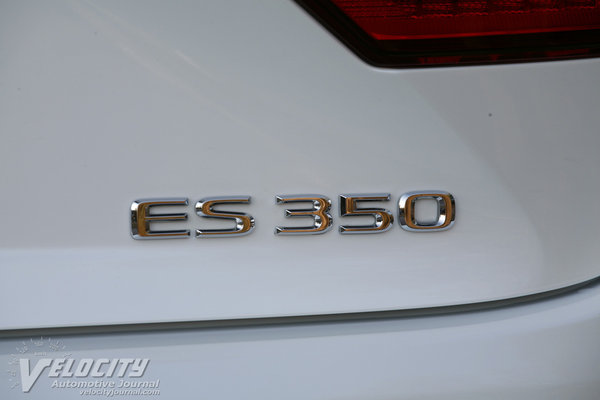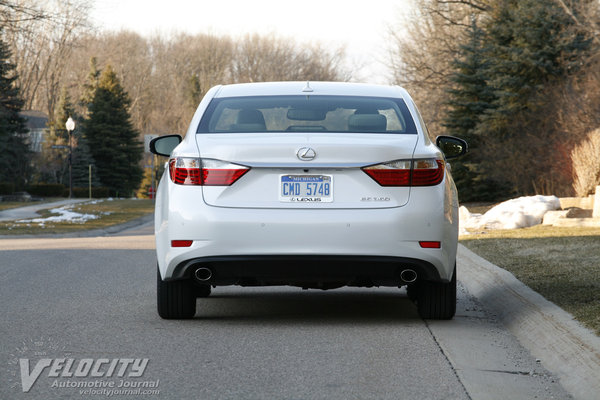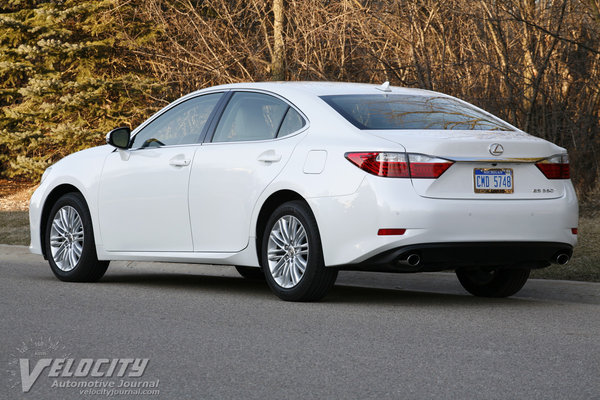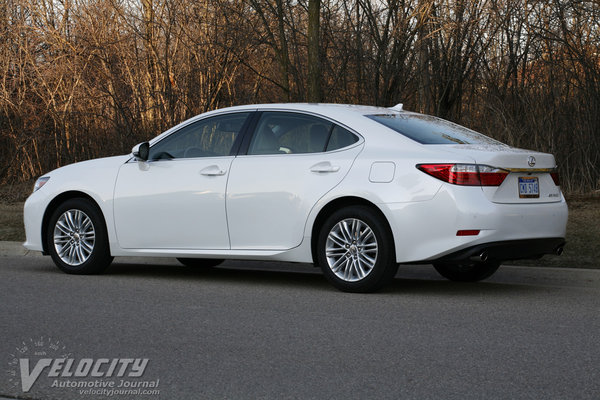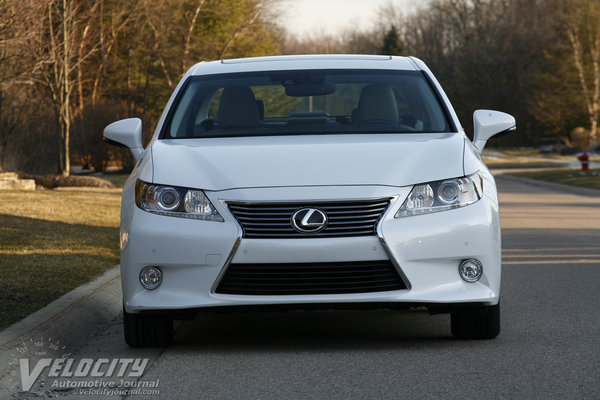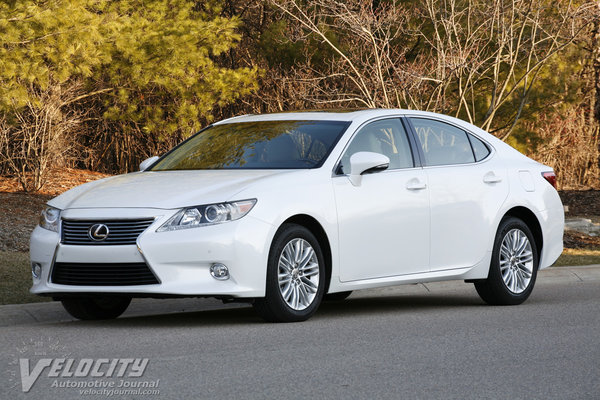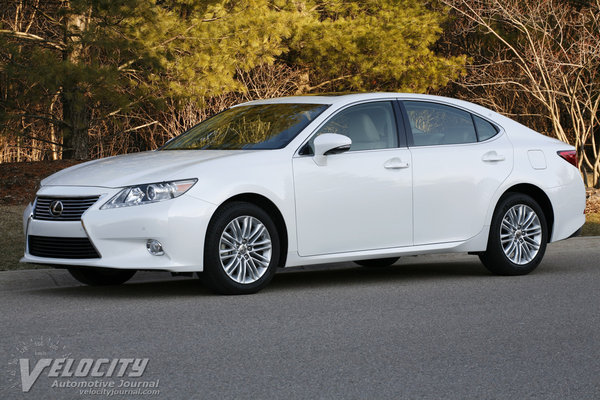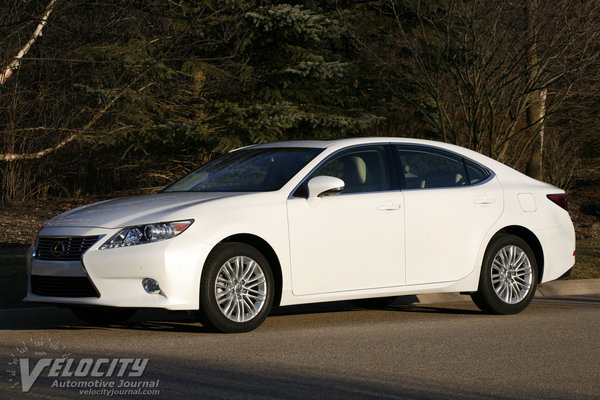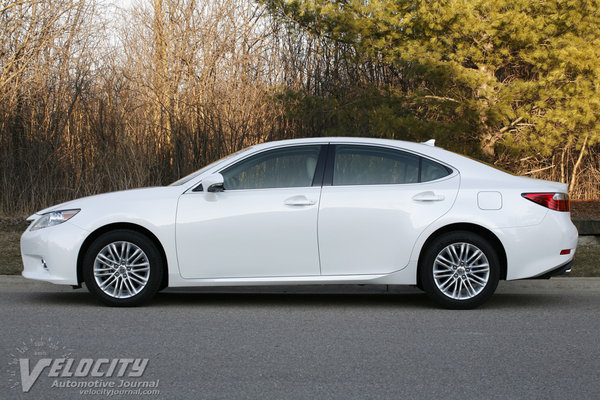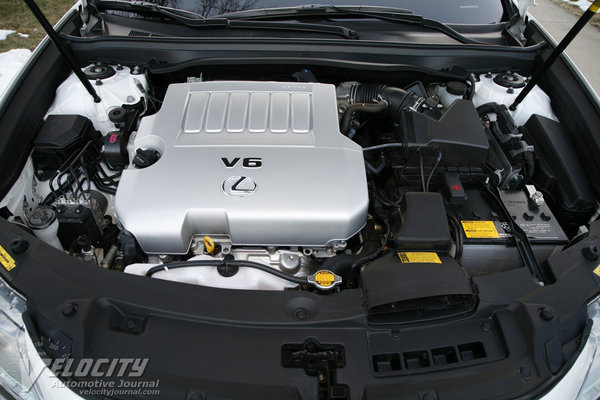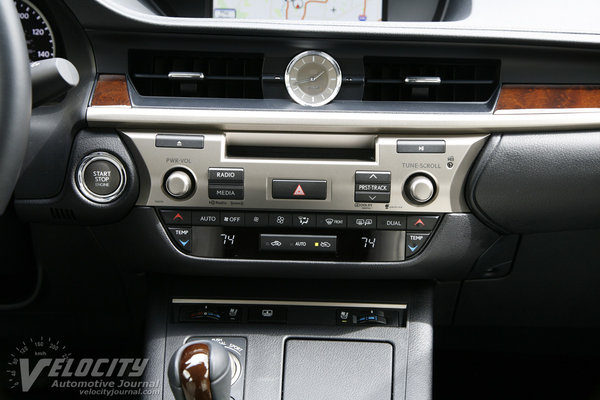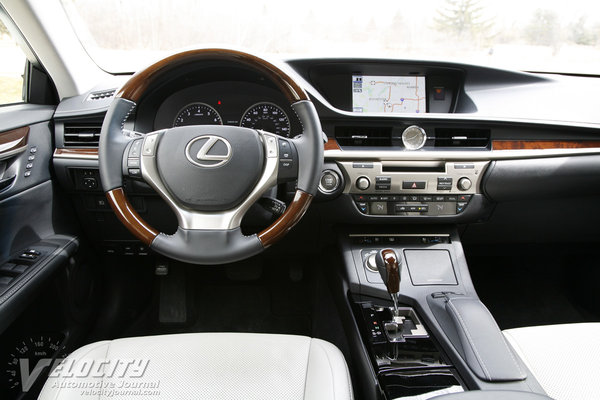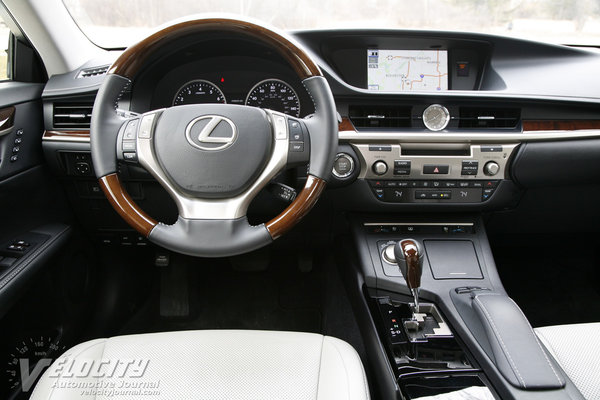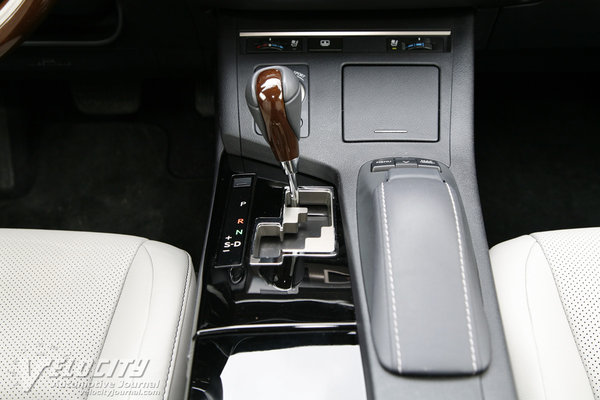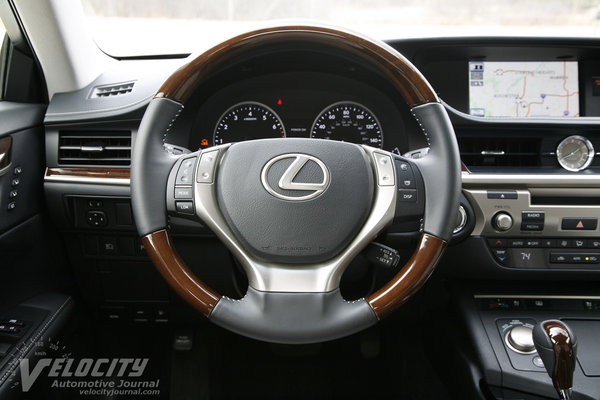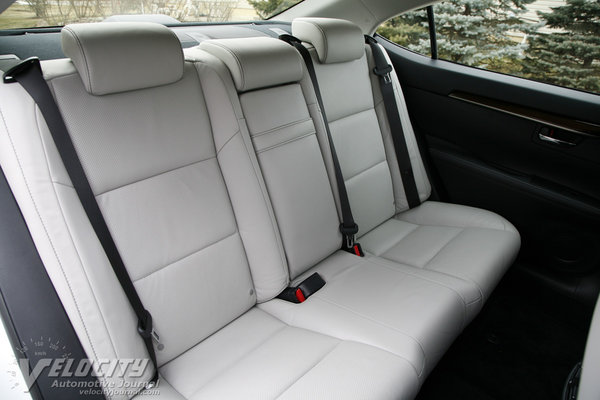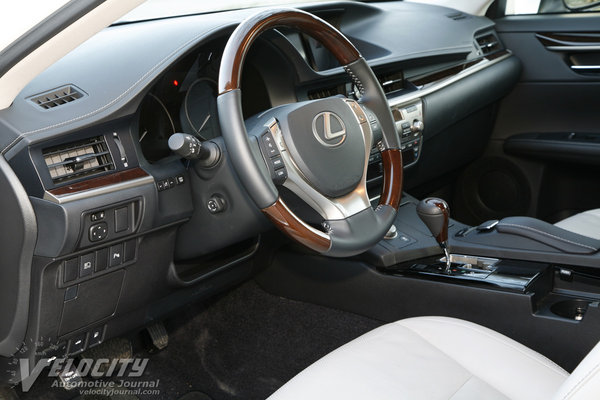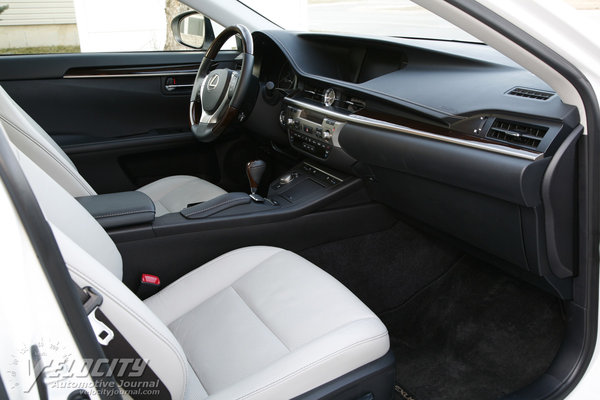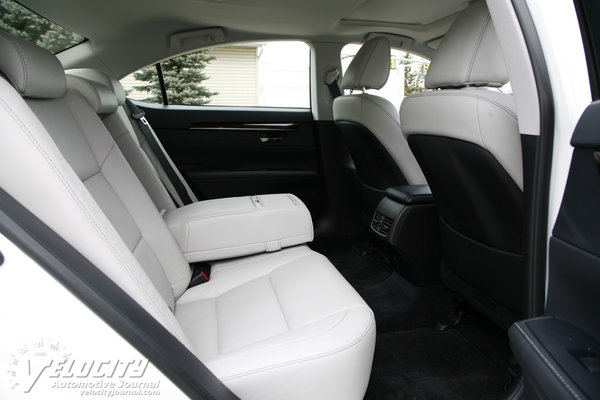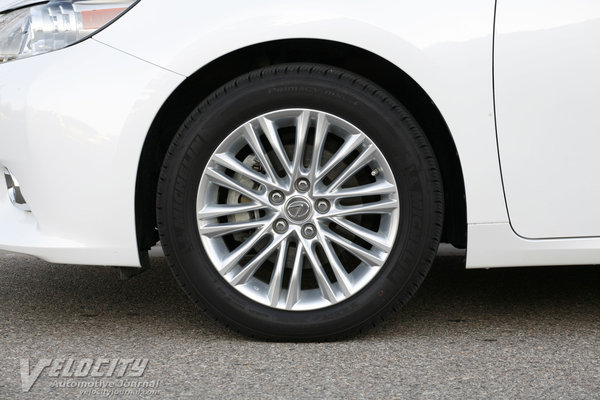2013 Lexus ES350
05/17/2013
Shahed Hussain
Among the Lexus lineup of sedans, the midsize ES350 is the best-selling model. Slightly larger than the Camry, the Lexus is distinguished by significantly different styling and an extensive list of luxury options that can push its sticker price beyond $50K. Entry-luxury sedans are an avenue to increased sales volume, so every major automaker is in this intensely competitive segment. Alternatives include the Acura TL, Buick Lacrosse, Lincoln MKZ, Audi A4, and Hyundai Azera. Some customers may also cross-shop the closely related Avalon, but the Toyota lacks the extensive customization options Lexus offers with the ES350.
In this price-sensitive segment, the ES350 starts at a reasonable $36,370 for the V-6, and $39,250 for the new hybrid ES300H. Option packages on our tested vehicle included the Luxury Package ($1,370), which adds perforated leather seats, heated and ventilated front seats, maple wood trim, power tilt/telescoping wheel and remote keyless entry w/memory, 17-inch alloy wheels ($110), power rear sunshade ($210), and Lane Departure Alert with intelligent high-beam headlamps ($965). The navigation system ($2,625) includes an 8-inch display, Lexus Enform software, and various Sirius XM applications. Other options consist of Intuitive Park Assist ($500) and a wood and leather trimmed shift knob and steering wheel ($330). Add the $895 delivery fee plus the various options and the sticker price totals up to $43,105.
The Avalon, Camry and ES350 share much in common, including the 3.5L V-6 engine and 6-speed automatic transmission. The Camry's wheelbase is two inches shorter than the 111.0-inches for the Avalon and ES350. Both the Camry and ES350 are 71.7 inches wide, but the 192.7-inch Lexus is 3.5 inches longer and 0.8 inches lower than the 57.9 inch tall Camry. The Avalon is the longest (195.2 inches) and widest (72.2 inches) of the trio, but is 0.4 inches lower than the Camry. The ES350 sacrifices about an inch of headroom front and rear compared to the Camry, but gains 1.1 inches of rear legroom. Unsurprisingly, the Avalon has the most spacious interior with 103.6 cu. ft. (no moonroof); followed by the Camry (102.7 cu. ft.). The ES350 is notably smaller that both Toyotas with only 100.1 cu. ft. of total passenger room.
Lexus interiors have been lauded for superb build quality, and the new ES carries on the tradition. Our test vehicle was equipped with light gray leather seats and contrasting black door panels, seatbacks, and carpet. A stitched leather and wood-rimmed steering wheel immediately convey a sense of understated luxury. Glossy Bird's Eye maple trim adorns the doors, dashboard and shift knob. Controls on the steering wheel spokes allow convenient audio, mobile phone, and trip computer access. Instead of complex displays and gauges, Lexus designed a simple cluster with a clearly-marked 8,000 RPM tachometer and 160-MPH speedometer. Smaller coolant temperature and fuel level gauges are on the edges of the cluster. A central high-resolution display shows trip computer, odometer, and fuel consumption data.
The expected engine start/stop button is located on the dash, next to the audio controls on the center stack. Mobile devices can be recharged and connected to the audio system via a 12V outlet and USB input within the center console bin. Lexus resisted the temptation to clutter up the center stack with rows of buttons, opting to bury less important functions within the Entune infotainment system. Although most manufacturers have adopted touchscreens to interact with their infotainment systems, Lexus uses a mouse-like joystick on the console to control a cursor on the center multi-function display. Acclimating to the RTI (Remote Touch Interface) took a few days, but we still often overshot the intended menu settings with the cursor. Lexus has committed to this non-touchscreen interface across its lineup, but customers new to Lexus may find the RTI system initially disorienting.
Soft, perforated leather covers the front and rear seats. The driver and front passenger get 10-way power adjustment plus lumbar support. Lateral support is adequate, but the flat seat bolsters are designed for easy entry and exit. Both front seats are ventilated and heated. Front seat occupants up to 6 ft. tall will have acceptable headroom, but the standard moonroof and steeply raked A-pillar cut headroom for taller passengers. The sloping roofline shaves off a few crucial inches of rear headroom, so only occupants less than 6-ft. tall will be comfortable. Fortunately, ample legroom allows passengers to sprawl back in comfort. Even the middle seat is reasonably comfortable, as long as headroom is not a priority.
Previously the only powerplant available in the ES lineup, the all-aluminum 3.5L V-6 in the ES350 is now joined by a 2.5L inline-4 that powers the ES300H hybrid. Horsepower remains unchanged at 268-bhp @ 6,200 RPM and maximum torque of 248 lb.-ft occurs at 4,700 RPM. Variable valve-timing (VVT-i) optimizes intake and exhaust valve timing. Mated to the V-6 is an electronically controlled 6-speed automatic. Both fifth (0.713:1) and sixth (0.608:1) are overdrive ratios. Coupled with a tall 3.458:1 final drive ratio and a slippery 0.27 coefficient of drag, the ES350 aims for maximum fuel economy. The EPA estimates 21/31 MPG (city/hwy.), impressive for a V-6 luxury sedan, but we averaged 23-26 MPG is mixed city and highway driving. Unlike many other powerplants in its class, the Lexus V-6 requires only 87-octane unleaded gasoline.
As manufacturers search for increased efficiency in every subsystem, electrically-assisted power steering has become the norm for new vehicles. So it isn't surprising that Lexus adopted electric rack-and-pinion steering assist for the ES350. Sharing suspension components with the Camry lowers costs, so the ES350 gets MacPherson struts, coil springs, and stabilizer bar front suspension. At the rear are dual-link MacPherson struts, coils springs, and a stabilizer bar. Lexus engineers tuned the suspension with specific damper rates and rear suspension geometry to improve ride and road isolation. The brake system consists of 4-wheel discs, with 11-inch diameter vented rotors in front and 11-inch diameter solid rotors in the rear. ABS, traction control (TRAC), and stability control (VSC) are standard. Lexus fits 17-inch alloy wheels and 215/55R17 tires as standard equipment. Optional 18-inch aluminum wheels with 225/45R18 tires are available, as is a full-size replacement for the temporary spare tire. Our test vehicle was shod with Michelin Primacy MXV-4 tires.
A dash-mounted pushbutton starts the V-6, which is nearly inaudible at idle. Engine vibrations normally felt through the steering wheel and chassis are barely perceptible. A 3-position knob on the center console selects driving modes "Eco", "Normal", or "Sport", altering throttle response and suspension damping according the driver's preferences. We spent most of our time using the Normal and Sport settings, as we found that the Eco mode is best suited for only leisurely driving. Choosing the Sport mode changes the instrument panel lighting from blue to red, but more importantly, tightens up suspension damping and increases steering effort, allowing the ES to be more rewarding to drive on the highway. Reducing power assist improves straight-line stability, but cannot compensate for the nearly nonexistent feedback that seems to plague many electric power steering systems. The brakes haul down the ES350 with minimal suspension dive and reasonable pedal feel.
Powertrain refinement is a Lexus strength, so the 3.5L V-6 and 6-speed automatic work together seamlessly as expected. The U660E electronically-controlled transmission upshifts with no detectable power interruption, but downshifts are often delayed a few seconds below 45 MPH. Alternately, the gated shift lever allows sequential gearchanges when desired. Selecting Sport mode, our preferred setting, improves transmission responsiveness significantly. The V-6 is nearly inaudible at idle and almost as quiet cruising on the highway. Lexus claims the 0-60 MPH sprint in 7.1 seconds and the quarter mile in 15.1 seconds. Top speed is limited to 130 MPH. Although its 268-bhp output is not among the class leaders, the V-6 provides more than adequate power for the typical ES350 customer.
Over the years, the ES has earned a deserved reputation for superb ride comfort, an attribute that Lexus has continued to refine. On most uneven road surfaces, this Lexus glides over with the just a hint of the potholes and patches underneath coming through the steering wheel and chassis. Over truly pockmarked roads, the suspension tuning isn't quite as successful, but even then, the ride is no worse than other luxury sedans in its class. Judicious tuning of the stabilizer bars keeps the Lexus reasonably flat around curves, although the steering effort does not noticeably increase as the suspension loads up, which sometimes led us to underestimate entry speeds onto highway off ramps. Most Lexus customers are unlikely to push the handling limits of the ES350, so we really don't consider its lack of sporting intentions to be an issue.
Lexus has continued to refine the ES over the years to please its core customers. Few entry luxury sedans can approach this combination of relative affordability and supremely comfortable ride. Lexus has been often dismissed for engineering vehicles that prioritize isolation over driver involvement, but the ES needs no apologies for a single-minded focus on pleasing its core customers. The ES350 makes a token attempt to widen its appeal beyond its loyal customer base, but Lexus has no need to reposition it as a sport sedan since that is the role of the IS350. Ironically, the Avalon is probably the most direct competitor to the ES350, but for some, the Lexus badge and luxury are worth the premium.

